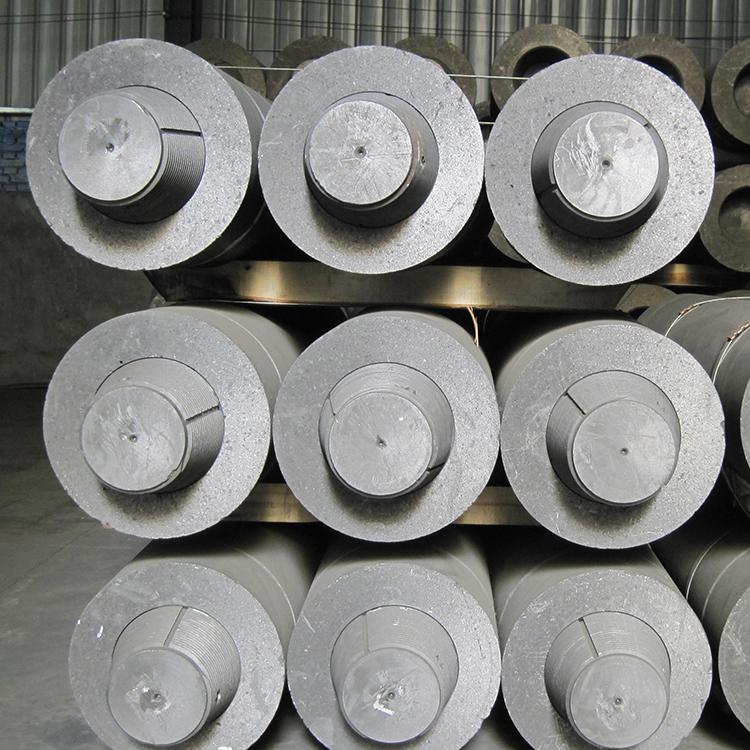Why can graphite electrodes withstand high-temperature environments?
Graphite electrodes play a crucial role in modern industry, especially in applications in high-temperature environments, such as electric arc furnace steelmaking, aluminum electrolysis, and electrochemical processing. The reason why graphite electrodes can withstand high-temperature environments is mainly attributed to their unique physical and chemical properties. This article will explore in detail the excellent performance of graphite electrodes in high-temperature environments from aspects such as the structure, thermal properties, chemical stability, and mechanical strength of graphite.
1. Structural characteristics of graphite
Graphite is a layered structure material composed of carbon atoms. In the crystal structure of graphite, carbon atoms are arranged in a hexagonal planar layer. The carbon atoms within each layer are connected by strong covalent bonds, while the layers interact with each other through relatively weak van der Waals forces. This layered structure endows graphite with unique physical and chemical properties.
Strong covalent bonds within layers: The covalent bonds between carbon atoms within layers are extremely strong, enabling graphite to maintain structural stability even at high temperatures.
Weak van der Waals forces between layers: The interaction between layers is relatively weak, which makes graphite prone to interlayer sliding when subjected to external forces. This characteristic endows graphite with excellent lubricity and processability.
2. Thermal properties
The excellent performance of graphite electrodes in high-temperature environments is mainly attributed to their outstanding thermal properties.
High melting point: Graphite has an extremely high melting point, approximately 3,652 °C, which is much higher than that of most metals and alloys. This enables graphite to remain solid at high temperatures without melting or deforming.
High thermal conductivity: Graphite has a relatively high thermal conductivity, which can quickly conduct and disperse heat, preventing local overheating. This characteristic enables the graphite electrode to evenly distribute heat in high-temperature environments, reduce thermal stress and extend service life.
Low coefficient of thermal expansion: Graphite has a relatively low coefficient of thermal expansion, which means that its volume changes less at high temperatures. This characteristic enables graphite electrodes to maintain dimensional stability in high-temperature environments, reducing stress cracking and deformation caused by thermal expansion.
3. Chemical stability
The chemical stability of graphite electrodes in high-temperature environments is also one of the key factors for them to withstand high temperatures.
Oxidation resistance: At high temperatures, the reaction rate of graphite with oxygen is relatively slow, especially in inert gases or reducing atmospheres, where the oxidation rate of graphite is even lower. This oxidation resistance enables graphite electrodes to be used for a long time in high-temperature environments without being oxidized and worn out.
Corrosion resistance: Graphite has good corrosion resistance to most acids, alkalis and salts, which enables graphite electrodes to remain stable in high-temperature and corrosive environments. For instance, during the electrolytic process of aluminum, graphite electrodes can withstand the corrosion of molten aluminum and fluoride salts.
4. Mechanical strength
Although the interlaminar interaction of graphite is relatively weak, the strong covalent bonds within its intramellar structure endow graphite with high mechanical strength.
High compressive strength: Graphite electrodes can maintain a relatively high compressive strength even at high temperatures, capable of withstanding high pressure and impact loads in electric arc furnaces.
Excellent thermal shock resistance: The low coefficient of thermal expansion and high thermal conductivity of graphite endow it with excellent thermal shock resistance, enabling it to maintain structural integrity during rapid heating and cooling processes and reduce cracking and damage caused by thermal stress.
5. Electrical properties
The electrical performance of graphite electrodes in high-temperature environments is also an important reason for their wide application.
High electrical conductivity: Graphite has excellent electrical conductivity, which can effectively conduct current and reduce power loss. This characteristic enables graphite electrodes to transfer electrical energy efficiently in electric arc furnaces and electrolysis processes.
Low resistivity: The low resistivity of graphite enables it to maintain a relatively low resistance at high temperatures, reducing heat generation and energy loss, and improving energy utilization efficiency.
6. Processing performance
The processing performance of graphite electrodes is also an important factor for their application in high-temperature environments.
Easy processability: Graphite has excellent processability and can be processed into electrodes of various shapes and sizes through mechanical processing, turning, milling and other techniques to meet the demands of different application scenarios.
High purity: High-purity graphite electrodes have better stability and performance in high-temperature environments, which can reduce chemical reactions and structural defects caused by impurities.
7. Application Examples
Graphite electrodes are widely used in multiple high-temperature industrial fields. The following are some typical application examples:
Electric arc furnace steelmaking: In the electric arc furnace steelmaking process, graphite electrodes, as conductive materials, can withstand temperatures as high as 3000°C, converting electrical energy into thermal energy to melt scrap steel and pig iron.
Electrolytic aluminum: During the electrolytic aluminum process, the graphite electrode serves as the anode, capable of withstanding the high temperatures and corrosion of molten aluminum and fluoride salts, stably conducting current, and promoting the electrolytic production of aluminum.
Electrochemical machining: In electrochemical machining, graphite electrodes, as tool electrodes, can operate stably in high-temperature and corrosive environments, achieving high-precision processing and forming.
Conclusion
In conclusion, the reason why graphite electrodes can withstand high-temperature environments mainly lies in their unique layered structure, excellent thermal properties, chemical stability, mechanical strength, electrical properties and processing performance. These characteristics enable graphite electrodes to remain stable and efficient in high-temperature and corrosive environments, and they are widely used in fields such as electric arc furnace steelmaking, electrolytic aluminum, and electrochemical processing. With the continuous development of industrial technology, the performance and application scope of graphite electrodes will be further expanded, providing more reliable and efficient solutions for high-temperature industries.
Post time: Apr-21-2025

